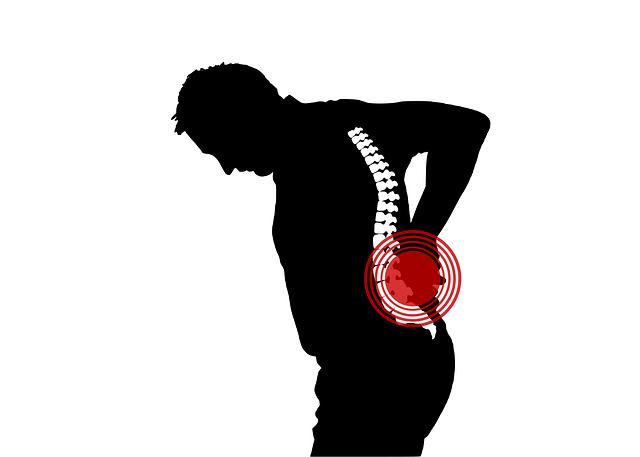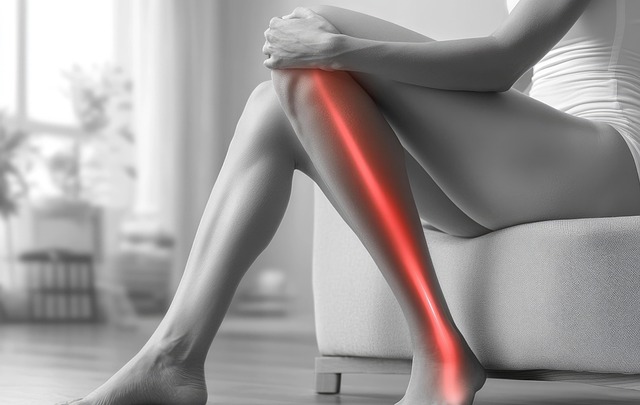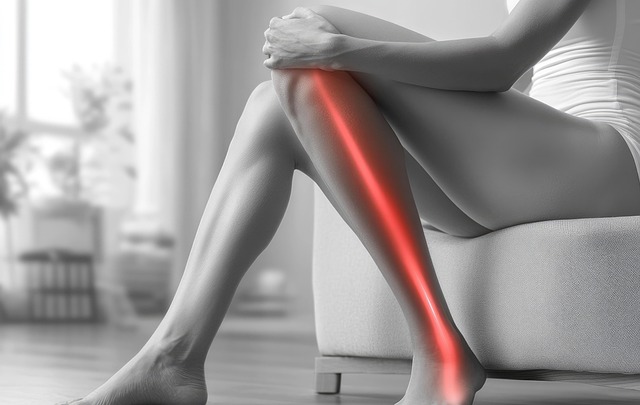Auto accident chiropractic treatment offers a non-invasive solution for persistent sciatica. Chiropractors align spines, reduce nerve pressure, and prescribe exercises to strengthen the lower back, providing immediate and long-term pain relief. This holistic approach combines adjustments, patient education, and healthy habits like good posture and low-impact exercise for sustained sciatica relief.
After a car crash, sciatica—a painful condition affecting the lower back and legs—can persist long after the initial injury. This article explores comprehensive strategies for managing sciatica post-accident, focusing on the role of auto accident chiropractic treatment as a non-invasive approach. We delve into understanding sciatica’s origins and its impact, followed by effective long-term management and recovery techniques, providing insights to foster healing and alleviate pain.
- Understanding Sciatica After an Auto Accident
- Chiropractic Care: A Non-Invasive Approach
- Long-Term Management and Recovery Strategies
Understanding Sciatica After an Auto Accident

After a car crash, experiencing sciatica is not uncommon. Sciatica refers to pain that radiates along the path of the sciatic nerve, which runs from the lower back through the buttocks and down each leg. In the context of an auto accident, this pain often arises from injuries to the spine, such as herniated discs or strained muscles. The initial treatment for acute sciatica typically involves rest, over-the-counter pain relievers, and physical therapy.
However, for persistent sciatica that continues long after the initial injury has healed, seeking specialized care becomes crucial. Auto accident chiropractic treatment offers a non-invasive approach to managing sciatica by focusing on adjusting spinal alignment and reducing pressure on the sciatic nerve. Chiropractors often combine adjustments with recommendations for lifestyle modifications and exercises tailored to strengthen the lower back and improve posture, ultimately fostering long-term relief from sciatica symptoms.
Chiropractic Care: A Non-Invasive Approach

Chiropractic care offers a non-invasive approach to managing sciatica after an auto accident. Chiropractors focus on adjusting the spine and aligning the vertebrae to alleviate pressure on the nerves, which is often the root cause of sciatic pain. This gentle manipulation can provide immediate relief and promote long-term healing for those suffering from sciatica following a vehicular collision.
The benefits of chiropractic treatment for sciatica in auto accident victims are numerous. It not only helps reduce sharp, shooting pains and numbness but also improves overall mobility and flexibility. Chiropractors may also incorporate other therapeutic techniques like heat/ice therapy, stretching exercises, and patient education to empower individuals with self-care strategies, ensuring a holistic recovery process.
Long-Term Management and Recovery Strategies

After an auto accident, managing and recovering from sciatica requires a comprehensive, long-term approach. While acute care focuses on pain relief, lasting recovery involves a combination of chiropractic treatments tailored to address the underlying causes. Chiropractors use techniques like spinal adjustments, targeted exercises, and therapy to reduce nerve compression, improve mobility, and strengthen supporting muscles. This personalized approach promotes healing and helps patients regain control over their daily lives.
Beyond chiropractic care, adopting healthy lifestyle habits is crucial for sustained sciatica relief. Maintaining good posture, practicing regular low-impact exercise, and incorporating ergonomic principles at work and home can prevent recurring symptoms. Additionally, stress management techniques like yoga or meditation complement the physical aspects of recovery by reducing muscle tension and promoting overall well-being.
After a car accident, managing long-term sciatica requires a comprehensive approach. Chiropractic care offers a non-invasive treatment option that can significantly alleviate pain and improve mobility. By combining this with targeted exercises and lifestyle adjustments, individuals can effectively manage their sciatica symptoms post-accident. Remember, early intervention and consistent care are key to optimizing recovery and preventing chronic conditions. For those experiencing sciatica after an auto accident, exploring these long-term strategies is essential for a fuller, pain-free life.














